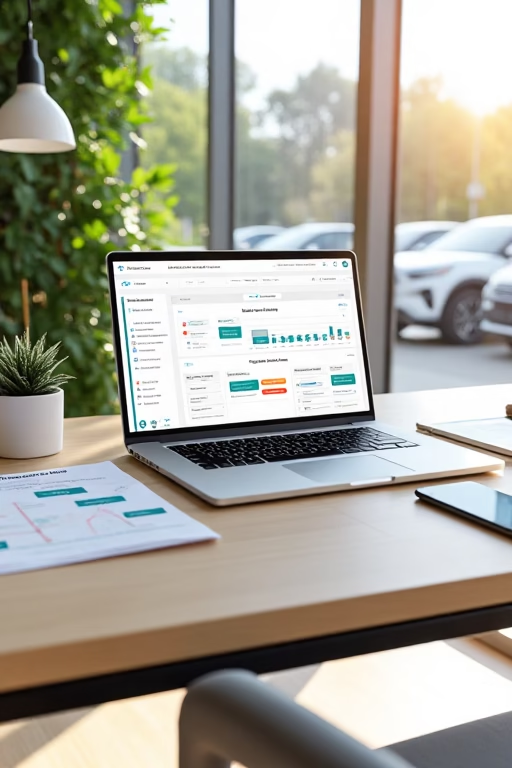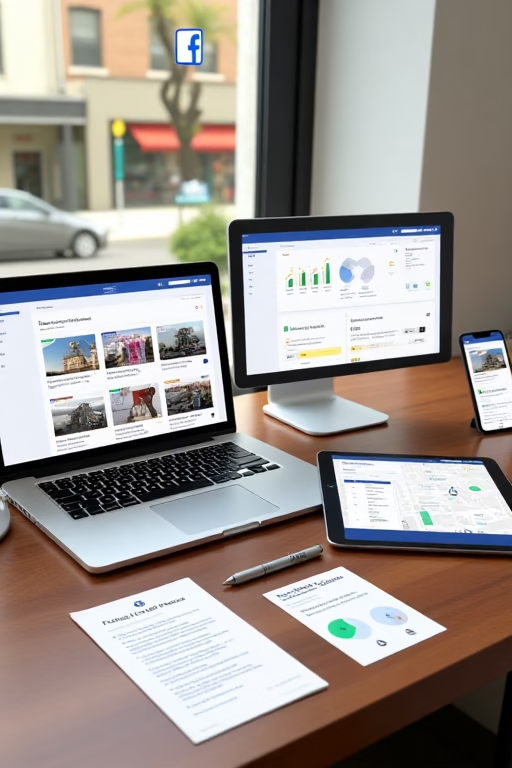Why You’re Not Getting Facebook Messages (and How to Fix It)
Why You’re Not Getting Facebook Messages (and How to Fix It)
Recover Your Messenger Flow with Market Wiz AI
Table of Contents
- Introduction: Why You’re Not Getting Facebook Messages (and How to Fix It)
- 1. Common Reasons You’re Not Getting Facebook Messages
- 1.1 Message Requests Folder
- 1.2 Privacy & Messaging Settings
- 1.3 Page Role & Permissions
- 1.4 Third-Party App Conflicts
- 1.5 Network or App Glitches
- 2. Troubleshooting Step-by-Step
- 2.1 Check Message Requests
- 2.2 Review Privacy Settings
- 2.3 Update Page & Admin Roles
- 2.4 Clear Cache & Reinstall App
- 2.5 Test on Desktop vs Mobile
- 3. Optimizing for Consistent Inbound Messages
- 3.1 Enable Instant Replies
- 3.2 Use Saved Replies & Labels
- 3.3 Promote Messenger CTA
- 3.4 Leverage Automated Bots
- 3.5 Pin Important Conversations
- 4. Best Practices to Never Miss a Message
- 4.1 Regular Inbox Audits
- 4.2 Assign Team Members
- 4.3 Integrate with CRM
- 4.4 Monitor Notifications
- 4.5 Set Up Alerts & Reminders
- 5. Tools & Integrations to Enhance Messaging
- 5.1 Messenger Bots & Chatflows
- 5.2 Zapier & API Connectors
- 5.3 Helpdesk Integrations
- 5.4 Analytics Dashboards
- 6. Case Studies: Inbox Recoveries
- 6.1 Small Retailer Boosts Replies by 70%
- 6.2 Service Business Reduces Missed Leads by 90%
- 7. Conclusion & Next Steps
- 8. 25 FAQs
- 9. 25 Extra Keywords
Introduction: Why You’re Not Getting Facebook Messages (and How to Fix It)
Why You’re Not Getting Facebook Messages (and How to Fix It) dives into the hidden reasons your Messenger inbox may be empty, and provides clear steps to restore message delivery. Whether you’re missing customer inquiries or personal chats, this guide will help you diagnose issues and implement fixes fast.
1. Common Reasons You’re Not Getting Facebook Messages
1.1 Message Requests Folder
Messages from non-friends may land in “Message Requests” instead of your main inbox—overlooked if you don’t check regularly.
1.2 Privacy & Messaging Settings
Your privacy configuration may block certain messages. Custom filters can prevent unknown contacts from reaching you.
1.3 Page Role & Permissions
If you manage a Facebook Page, lacking the correct admin or moderator role will hide incoming page messages.
1.4 Third-Party App Conflicts
Extensions or other messaging apps can interfere with Messenger’s notifications or delivery pipeline.
1.5 Network or App Glitches
Poor internet, outdated app versions, or server outages can temporarily disrupt message reception.
2. Troubleshooting Step-by-Step
2.1 Check Message Requests
Open Messenger → Click your profile icon → Select “Message Requests” to review hidden conversations.
2.2 Review Privacy Settings
In Settings → Privacy → Message Delivery, adjust filters to allow messages from everyone or desired groups.
2.3 Update Page & Admin Roles
Go to your Page → Settings → Page Roles, and confirm you have proper permissions to view and respond.
2.4 Clear Cache & Reinstall App
On mobile, clear Messenger cache in app settings or reinstall to eliminate corrupted files.
2.5 Test on Desktop vs Mobile
Try Facebook.com’s desktop Messenger—if messages appear there, the mobile app may be misconfigured.
3. Optimizing for Consistent Inbound Messages
3.1 Enable Instant Replies
Set up instant auto-replies in Page settings to acknowledge messages and prevent drop-offs.
3.2 Use Saved Replies & Labels
Create templated responses and label conversations to streamline follow-up and organization.
3.3 Promote Messenger CTA
Add “Message Us” buttons on your website and ads to drive traffic directly into your inbox.
3.4 Leverage Automated Bots
Deploy bots that ask qualification questions and route serious inquiries to live agents.
3.5 Pin Important Conversations
Pin high-priority chats to the top of Messenger so you never lose track of key leads.
4. Best Practices to Never Miss a Message
4.1 Regular Inbox Audits
Schedule weekly reviews of Message Requests and hidden folders to catch overlooked leads.
4.2 Assign Team Members
Delegate specific inbox roles so someone is always monitoring incoming messages.
4.3 Integrate with CRM
Sync Messenger with your CRM to log every conversation and trigger follow-up tasks.
4.4 Monitor Notifications
Ensure push and email notifications are enabled so you’re alerted to each new message.
4.5 Set Up Alerts & Reminders
Use third-party tools to send SMS or Slack alerts for unaddressed messages after a set time.
5. Tools & Integrations to Enhance Messaging
5.1 Messenger Bots & Chatflows
Platforms like ManyChat and Chatfuel automate greetings, FAQs, and data collection.
5.2 Zapier & API Connectors
Use Zapier to forward messages into Slack, email, or your CRM for centralized management.
5.3 Helpdesk Integrations
Tools like Zendesk and Freshdesk import Messenger threads as support tickets.
5.4 Analytics Dashboards
Services such as Dashbot track response times, volume, and conversation outcomes for optimization.
6. Case Studies: Inbox Recoveries
6.1 Small Retailer Boosts Replies by 70%
A boutique storefront uncovered 30 hidden message requests and implemented auto-replies, increasing reply rate by 70% in two weeks.
6.2 Service Business Reduces Missed Leads by 90%
An HVAC provider integrated Messenger with their CRM and set up Slack alerts, cutting missed inquiries by 90%.
7. Conclusion & Next Steps
Why You’re Not Getting Facebook Messages (and How to Fix It) reveals that most issues stem from hidden folders, misconfigured settings, or missing permissions. Follow the troubleshooting steps above, optimize your inbox workflows, and leverage integrations to ensure every customer message reaches you—no more missed opportunities.
Experience Market Wiz AI to automate Messenger monitoring and never lose a lead again.
8. 25 Frequently Asked Questions
1. Why am I not receiving messages from non-friends?
They go to your “Message Requests” folder—check it under your Messenger profile icon.
2. How do I find hidden messages?
In Messenger, tap your profile picture → “Message Requests” → “See Filtered Messages.”
3. Can privacy settings block messages?
Yes—adjust “Message Delivery” in Facebook Settings to allow messages from everyone or friends of friends.
4. Why aren’t page messages showing?
Ensure you have the correct Page Role (Admin, Editor, or Moderator) in Page Settings → Page Roles.
5. Do I need the Facebook app?
No—desktop Messenger on Facebook.com also displays messages and requests.
6. How often should I check Message Requests?
At least once daily to avoid missing time-sensitive inquiries.
7. Will reinstalling fix delivery issues?
Clearing cache or reinstalling can resolve corrupted data preventing new messages.
8. How do I enable instant replies?
On your Page, go to Inbox → Automated Responses → Instant Reply and customize your message.
9. Can I use chatbots to filter spam?
Yes—bots can ask qualifying questions and block or tag unqualified leads automatically.
10. Why aren’t I getting notifications?
Check device settings to allow Messenger push notifications and email alerts.
11. How do I integrate with my CRM?
Use native Facebook integrations or Zapier to send new messages into your CRM as contacts.
12. What third-party tools help?
ManyChat, Chatfuel, Dashbot, Zendesk, Zapier—each automates aspects of message management.
13. Can network issues cause missed messages?
Yes—poor connectivity can delay or drop incoming messages until reconnection.
14. How do I test on desktop?
Visit Facebook.com → Messages icon → View your inbox and requests in the sidebar.
15. Why do some messages show “Sent” but not arrive?
They may be pending in Message Requests or blocked by your recipient’s settings.
16. What is “Filtered Messages”?
Older or less relevant requests moved out of main requests—access under Message Requests.
17. How do I clear Messenger cache?
On Android: Settings → Apps → Messenger → Storage → Clear Cache. On iOS, reinstall the app.
18. Can I pin my inbox?
Yes—press and hold a conversation on mobile or click the pin icon on desktop to keep it at top.
19. Will API errors hide messages?
Misconfigured bots or API connectors can intercept messages—check your integration logs.
20. How do I see archived chats?
In Messenger, tap your profile → “Archived Chats” to review stored conversations.
21. Can I forward Messenger to email?
Not directly—use Zapier or a helpdesk integration to send new messages to your email.
22. How do I restore deleted messages?
Deleted messages cannot be recovered—only archived conversations remain accessible.
23. Why am I not getting group messages?
Check group settings—some groups miss notifications unless you’re tagged or mentioned.
24. How do I appeal a removed listing?
This applies to Marketplace; for Messenger, ensure compliance with Facebook’s community standards.
25. Where can I get more help?
Visit Market Wiz AI’s blog for advanced troubleshooting guides and automated Messenger solutions.
9. 25 Extra Keywords
- Facebook messages not coming through
- Messenger not receiving messages
- fix Facebook Messenger delivery
- no messages in inbox Facebook
- message requests missing messages
- Messenger hidden chat folder
- Facebook page messages not showing
- Messenger notification issues
- clear Messenger cache fix
- Messenger privacy settings block
- message filtering Facebook
- Messenger app reinstall
- desktop vs mobile Messenger
- instant reply setup Facebook
- Messenger chatbot integration
- CRM Facebook Messenger sync
- helpdesk Messenger integration
- Zapier Messenger automation
- ManyChat message handling
- Chatfuel Messenger fix
- Messenger API errors
- Facebook outage messaging fix
- group message notifications
- Messenger archived chats
- Messenger support guide
Why You’re Not Getting Facebook Messages (and How to Fix It) Read More »






